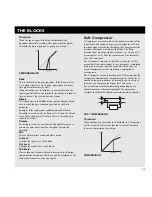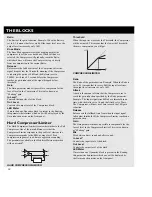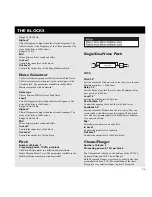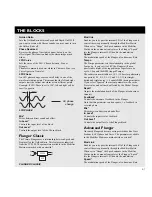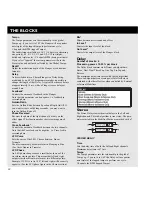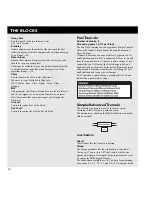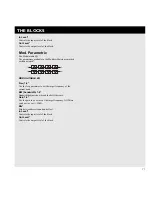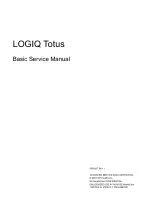
60
THE BLOCKS
changes blended with the direct sound give you the Chorus
sound, while the modulated signal alone will give you a
Pitch modulator also known as Vibrato. The difference
between Chorus and Flanging is the Feedback of the
Flanger, and the size of the modulated delay. Chorus
sounds use delay times around 10-20 ms while Flanger
tends to use times around 1-10 ms. The Feedback is the
parameter that gives you that classic mid-range tone. The
parameters available in the Modifier Matrix are marked
with an asterisk*.
Classic Chorus
The Classic Chorus uses a relationship between Speed and
Depth called the Golden Ratio. This feature was inherited
from the TC 2290. The parameters available in the Modifier
Matrix are marked with an asterisk*.
CHORUS/FLANGER
Mod Link
Enables you to bypass the internal LFO of the Chorus, and
control the sweep manually through the Modifier Matrix.
When set to “Shape” the Speed entrance in the Modifier
Matrix works as manual control over the Chorus. “Speed”
lets the Chorus’ internal LFO handle the modulation.
Speed*
The modulation speed of the Chorus, also known as Rate.
Tempo
The Tempo parameter sets the relationship to the global
Tempo e.g. if you set it to 1/4T the Chorus will use quarter
note triplet of the tapped tempo to perform one cycle.
1/4 equals the BPM (tapped Tempo).
The subdivisions available are, 16/1 (16 bars for performing
one period), 8/1, 4/1, 2/1, 1/1, and 1/2-1/32 in straight,
dotted and triplet notes - 1/4 equals BPM (beats per
minute).
If you select “Ignored” the current parameter will use the
Preset value and will not be affected by the Global Tempo.
Depth*
Adjusts the modulation depth of the Chorus, also known as
Intensity.
Mix*
Mixes between direct sound and effect.
In Level*
Controls the input level of the block.
Create a Vibrato by setting the Mix at 100%,
Depth at 5-10% and Speed to 1-2Hz.
Advanced Chorus
Advanced Chorus adds some extra parameters like LFO
Phase and Curve. The parameters available in the Modifier
Matrix are marked with an asterisk*.
Mod link
Enables you to bypass the internal LFO of the Chrous, and
control the sweep manually through the Modifier Matrix.
When set to “Shape” the Speed entrance in the Modifier
Matrix works as manual control over the Chorus. “Speed”
lets the Chorus’ internal LFO handle the modulation.
Speed*
The modulation speed of the Chorus, also known as Rate.
Tempo
The Tempo parameter sets the relationship to the global
Tempo e.g. if you set it to 1/4T the Chorus will use a quarter
note triplet of the tapped tempo to perform one cycle.
1/4 equals the BPM (tapped Tempo).
The subdivisions available are, 16/1 (16 bars for performing
one period), 8/1, 4/1, 2/1, 1/1, and 1/2-1/32 in straight,
dotted and triplet notes - 1/4 equals BPM (beats per minute).
If you select “Ignored” the current parameter will use the
Preset value and will not be affected by the Global Tempo.
Depth*
Adjusts the Modulation depth of the Chorus, also known as
Intensity.
Delay
As described earlier, a Chorus/Flanger is a Delay being
modulated by an LFO. This parameter makes it possible to
change the length of that Delay. A typical Chorus uses delays
at approximately 10ms, while a Flanger uses delays at
around 5ms.
Summary of Contents for FirewarX
Page 1: ...FireworX STUDIO EFFECTS PROCESSOR USERS MANUAL ...
Page 2: ......




